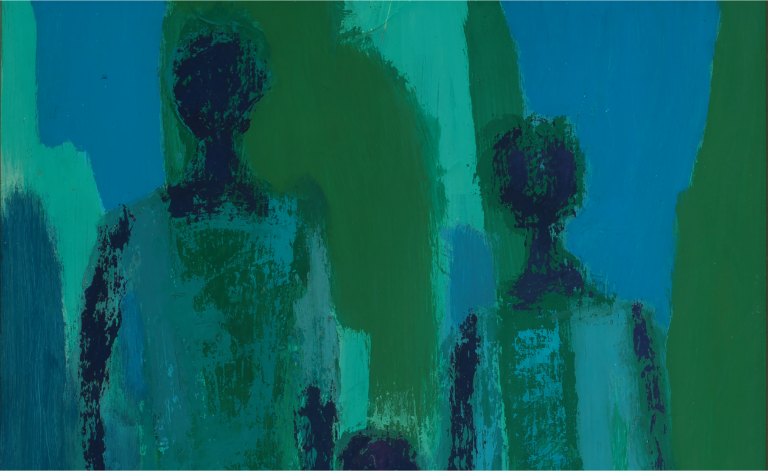
Ellis Wilson was a Black artist who spent much of his life living and painting in New York City. He was a part of the Harlem Renaissance — a time when African American music, art, dance and politics thrived in New York City. During the 1940s, Wilson traveled to the South, where he painted scenes of rural Black life. He was known for his simple compositions showing the “vitality and simple dignity” of the people he painted. What do you notice about the subjects of “Dusk”?
After a trip to Haiti in the 1950s, Wilson’s painting style became more abstract. He began depicting people as simple black shapes overlaid with bright, bold colors. In this painting, Wilson uses layers of cool colors. Cool colors are shades of blue, green and purple. Warm colors are shades of red, orange and yellow. Cool and warm colors contrast — they are on opposite sides of the color wheel.
What do cool and warm colors remind you of? What mood, or feeling, do the cool colors in “Dusk” create?
In this activity, you will use cool colors to create a painting that inspires a certain feeling or mood.
 Ellis Wilson (American, 1899 – 1977), “Dusk,” ca. 1950. Oil on canvas, 33 1/2 × 23 1/2 inches. Georgia Museum of Art, University of Georgia; The Larry D. and Brenda A. Thompson Collection of African American Art. GMOA 2011.609.
Ellis Wilson (American, 1899 – 1977), “Dusk,” ca. 1950. Oil on canvas, 33 1/2 × 23 1/2 inches. Georgia Museum of Art, University of Georgia; The Larry D. and Brenda A. Thompson Collection of African American Art. GMOA 2011.609.


For this activity you will need:
- Thick paper, such as construction or watercolor paper
- Paint
- Paintbrushes
To make your own cool-color painting:
- Close your eyes and think about cool colors like blues, greens or purples. Do you imagine a place, like the ocean or the sky? Do you notice a feeling, like calm or sadness?
- Start painting cool colors on the paper. Try to re-create your feelings in the painting. What kind of brush strokes will you use? How might you depict crashing waves or cold temperature?
- Layer colors and get creative! Mix colors to find the perfect shade.
- When you are finished, try making the same painting with warm colors. How do layers of red, orange or yellow change the feeling of the painting?